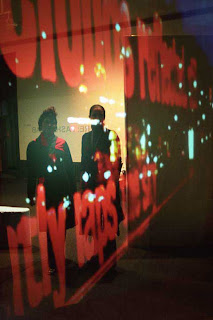
Interactive Media embedded in architectural settings can create new forms and organizations of mixed reality environments: enjoyment of the immediate physical nature of our built environments can be blended with the ephemeral nature of animated and interactive digital context."
_Tobi Schneidler in The ReFashion Lab: Building Digital Matter and Hybrid Space, ISEA 2002 conference in Nagoya, Japan Nov_02
Project info| Architect: Tobi Schneidler
Start: January_01
End: December_01
Partners: Christiane Posch, Nokia Research: Juha Kaario, Scanner: Robin Rimbaud, Tomato Interactive: Tom Roope
The ReFashion Lab is a prototype fashion store created as a means to exhibit the use of interactive media in architectural spaces to evoke unique interactions between individual users and the space they occupy. The goal of the project is to provide a new understanding of the hybrid between an underlying digital infrastructure and the physical structure itself. In this experiment, the team strived to fully integrate the media into the physical structure, organization and ambience of a physical space. The notion of “ubiquitous computing” suggests that media is the force in the background that surfaces to augment real life situations.
The realm of the ReFashion Lab is a hybrid between tangible things, such as fashion artifacts, and the effects of the digital media as the two come together in real life situations. The fashion store scenario was chosen as a thematic context to represent this type of thinking since its environment is infused with personal desire, big business and artistic sensibilities.
 _where media and physical organizations come together_Interactive Architecture dot Org
_where media and physical organizations come together_Interactive Architecture dot Org
 _finding the physical space within a digital context_The ReFashion Lab: Building Digital Matter and Hybrid Space, ISEA Conferance in Nagoya, Japan Nov_02
_finding the physical space within a digital context_The ReFashion Lab: Building Digital Matter and Hybrid Space, ISEA Conferance in Nagoya, Japan Nov_02
















